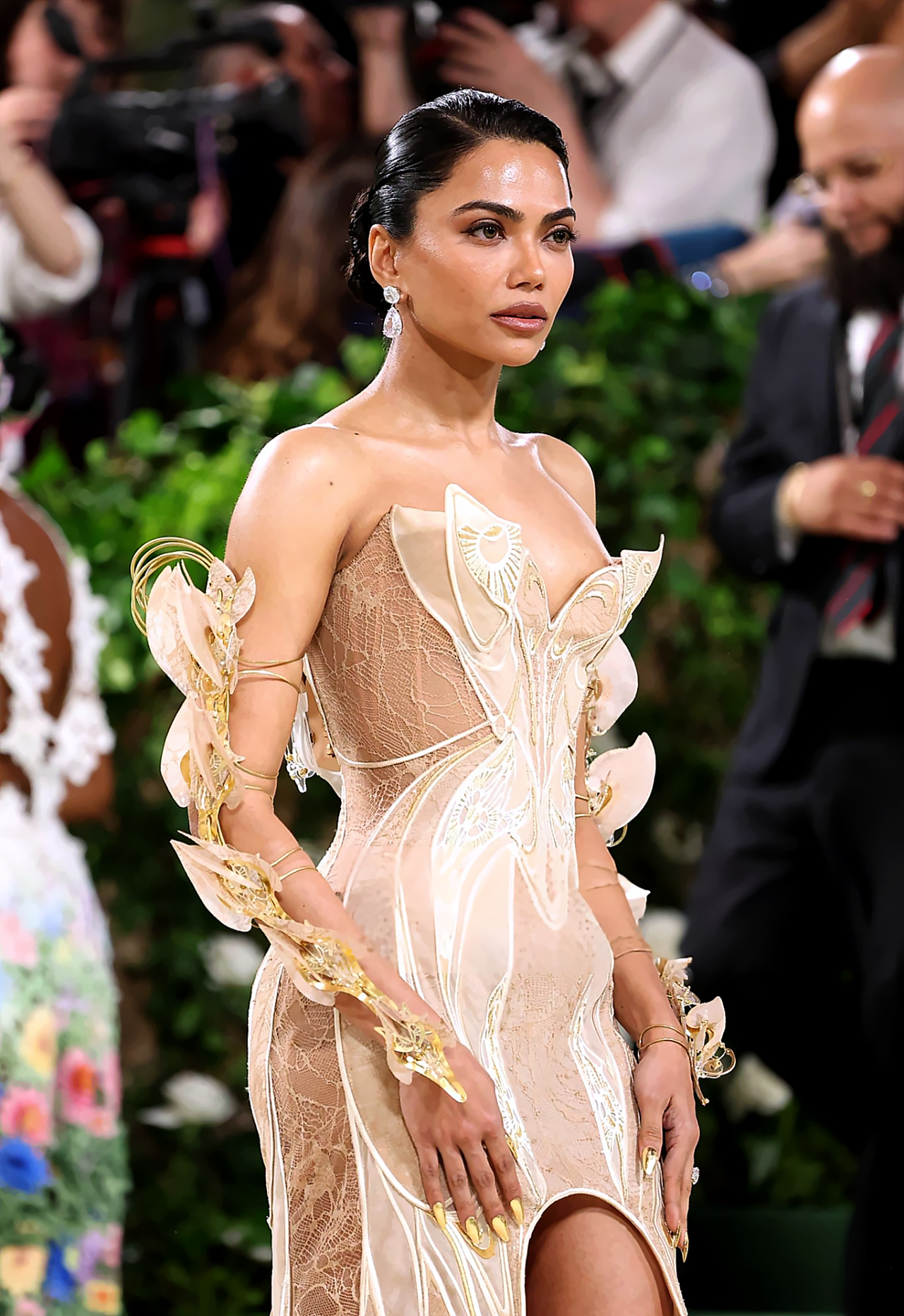The Met Gala, held each year to support the Costume Institute of the Metropolitan Museum of Art, was initially organized by Eleanor Lambert in 1948 as a simple charity dinner. Over the years, under the guidance of Anna Wintour, it has evolved into a global cultural phenomenon.
The event made a grand return, with this year’s vibrant dress code being “The Garden of Time,” inspired by the exhibition “Sleeping Beauties: Reawakening Fashion.” Departing from last year’s monochrome homage to Karl Lagerfeld, the current theme burst with colors. Contrary to initial expectations, the theme did not nod to Disney princesses but rather celebrates historical archives so delicate that they can no longer be worn. One of the highlights was a Givenchy couture piece lent to Kendall Jenner, that had been unworn for 25 years and described as “literally a sleeping beauty”. However, she was not the only one to capture the spotlight. The event featured striking debuts and spectacular ensembles, such as Tyla in a stunning sand-colored Balmain dress marking her first Met appearance, Cardi B in a voluminous skirt, Lana Del Rey in an outfit designed by Alexander McQueen’s current designer, Sean McGirr, and the mysterious Mona Patel who impressed the spectators in her Iris Van Herpen butterfly dress. Each ensemble brought the night to life, making the gala a vibrant celebration of timeless fashion.
Drawing inspiration from the symbolism of gardens, “The Garden of Time” reflected themes of growth, change, and rejuvenation found in nature, mirroring the cyclical transformations inherent in the fashion world. Much like the hidden potential and regenerative power found in Frances Hodgson Burnett’s The Secret Garden, fashion designers’ creative spaces serve as fertile grounds for innovation, where avant-garde designs blossom.
The impact of the Met Gala extends beyond the red carpet and deep into media culture, where its effects can be felt in trends and dialogues worldwide. This year, for example, the event ignited crucial conversations about sustainability within the fashion industry. By highlighting the relationship between fashion and the environment, the theme underscored the urgency of adopting sustainable practices, calling on designers to adopt green measures and materials that help preserve our planet’s natural resources for future generations. Drawing inspiration from J.G. Ballard’s dystopian narrative, “The Garden of Time,” the theme delved into the philosophical essence of transient beauty and inevitable renewal. Through Ballard’s allegory of a noble couple’s vain efforts to halt the advance of time, the theme mirrors fashion’s continuous cycle of creation, evolution, and innovation. This narrative underscored the fragility and temporality inherent in both nature and fashion, serving as a reminder of the imperative need for environmental mindfulness within the fashion industry.
The Met Gala also provides a platform to shed light to ongoing societal issues. A notable example is Alexandria Ocasio-Cortez’s appearance in 2021. Her white Brother Vellies dress with the striking red message “Tax the Rich ” across her back, sparked intense conversations. Despite facing backlash and criticism for the irony of delivering this message at an event whose entrance fee was 75,000 USD this year, A.O.C emphasized that her purpose was to challenge societal norms. By using the Met Gala’s global reach, she brought her message to an audience beyond her usual political sphere, demonstrating that there can be a link between fashion and activism. A.O.C isn’t the only one that has caused commotion, Lena Waithe has also used her appearances to challenge norms and promote inclusivity more than once. At the 2018 Met Gala, themed “Heavenly Bodies: Fashion and the Catholic Imagination”, Lena wore a rainbow-colored cape, symbolizing LGBTQ+ pride. The powerful visual paired with the religious theme of the event advocated the exclusion that some LBTQ+ members face in the light of religion.
These appearances underscore that the Gala is more than just a simple event where celebrities come together to pose and “look pretty”. Every outfit is deeply curated to invoke emotions and dialogues, drawing broader topics such as innovation, sustainability, and societal concerns.

